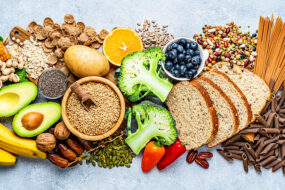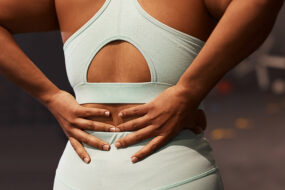What to eat during every stage of your menstrual cycle
Syncing your diet with your menstrual cycle can be a game changer. Nutritionists share what to eat during each stage.
Ever heard the adage, “You are what you eat”? Turns out, it holds true for your menstrual cycle.
Whether you’re suffering mood swings, PMS or cramping, experts say what you eat during this time can make a big difference to your wellbeing.
Nutritionist Steph Lowe says more women are realising the benefits of adjusting their diet according to their menstrual cycle, which range from reducing PMS symptoms to boosting energy levels.
How to start syncing your diet to your menstrual cycle
Steph recommends you start by tracking your cycle to help you understand when you’re experiencing symptoms, then eating and exercising to support it.
“It’s important to pay attention to your body’s needs, and make choices that support your wellbeing,” Steph, founder of The Natural Nutritionist, says.
Equalution lead recipe developer and nutritionist Greer Calabro agrees: “Throughout your whole cycle, it’s really important to have a balanced diet and a balanced approach to nutrition.”
Experts share their advice on what to eat during each stage of your menstrual cycle:
What to eat during menstruation
The first day of your cycle is the day on which menstruation, aka your period, begins.
It happens when your uterus starts shedding its lining.
For optimal wellbeing during this stage, you’ll need more of the following:
Iron
During this phase, increasing your intake of iron-rich foods – leafy greens and red meat such as beef and lamb – is key, Steph says.
She says vitamin A, consumed in whole foods or in supplement form, is also important when you’re on your period.
“Organ meats are a big part that’s been missing from a more Western diet,” Steph says.
“They are a great source of a preformed vitamin A, which is retinol, one of the key factors required to make your iron.
“This is especially important for women who tend to struggle with their iron stores.”
Omega-3s
Greer says foods rich in omega-3 fatty acids can help lower inflammation.
She recommends eating salmon, tuna, nuts and seeds at this time, adding that in reducing inflammation, these foods “can help ease bloating and cramping symptoms”.
Water
Another simple way to help reduce menstrual bloating is to ensure you’re drinking enough water.
“We’re aiming for around two-and-a-half to three litres a day to keep those energy levels up and flush out the toxins,” Greer says.
Ginger
Steph also recommends adding ginger to your diet during this stage, which studies have found boasts anti-inflammatory properties and helps to alleviate nausea.
Simply add finely chopped fresh ginger to stir-fries and curries, or try ginger tea.
What to eat during your follicular phase and ovulation
The follicular phase, which begins when your period starts, lasts for approximately 14 days and ends with ovulation – when a mature egg is released from an ovary.
Ovulation usually occurs around mid-cycle and lasts from 16 to 32 hours.
Our experts say now is the time to load up on a variety of nutrient-dense foods to support your body.
Steph says consuming linseeds and pumpkin seeds can be particularly helpful during this phase.
“The phytoestrogens promote oestrogen building and encourage the uterine lining to plump up in preparation for possible implantation,” Steph explains.
She also recommends plenty of cruciferous vegetables, such as broccoli, cauliflower, brussel sprouts and cabbage.
“These are rich in sulfur-containing compounds, which support detoxification,” Steph says.
What to eat during the luteal phase
Falling in the second half of your menstrual cycle, the luteal phase starts after ovulation and ends when your next period begins.
During this time, the uterine lining prepares for possible pregnancy.
Now is the perfect time to add magnesium-rich foods to your plate, including leafy greens, legumes, whole grains, sesame seeds and dark chocolate.
“These help reduce the effects of fluid retention and support a healthy GABA (a calming neurotransmitter) response, relieving PMS,” Steph says.
She also recommends foods rich in vitamin B6, including bananas, beans, beef, chicken, russet potatoes, salmon, spinach, sweet potatoes, tuna and walnuts.
“You need progesterone-building foods as progesterone surges to increase libido, maintain the uterine lining and, ultimately, to support a developing embryo,” Steph says.
Are there any foods you shouldn’t eat during mensturation?
During menstruation, research shows inflammatory foods such as processed meats, sugar and coffee can worsen menstrual cramps.
Alcohol can cause bloating during your period and make headaches worse, but limiting salt can reduce fluid retention, breast swelling and pain.
At the end of the day, the key to optimal wellness during your cycle is to listen to your body’s individual needs, Greer says.
Listen: Jean Hailes for Women’s Health head of public health and education Louise Browne discusses women’s health on The House of Wellness radio show:
Read more on menstrual cycles:
- How to tell if your menstrual cycle is normal
- Why you need to get to know your ovulation cycle
- Is your menstrual cycle the key to boosting your fitness?
- How to use your menstrual period to truly thrive
Written by Bianca Carmona.





